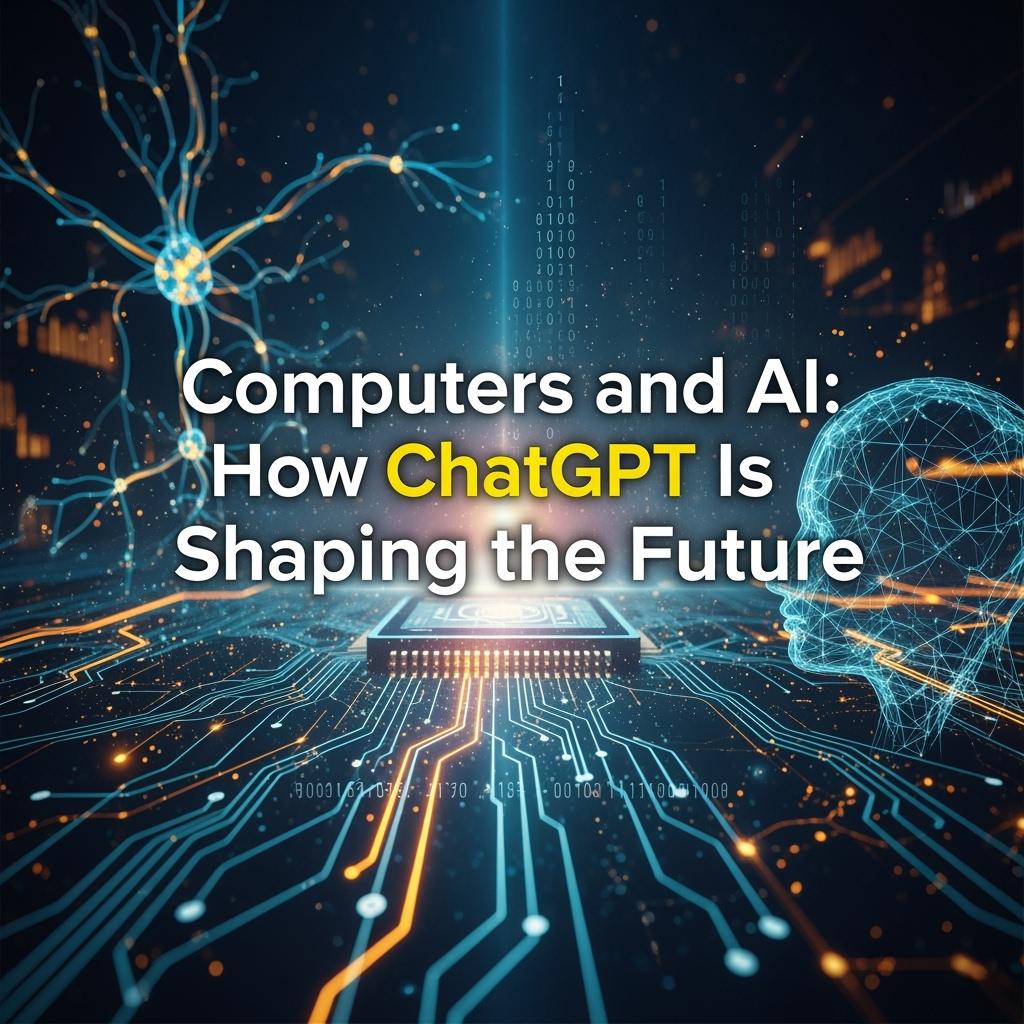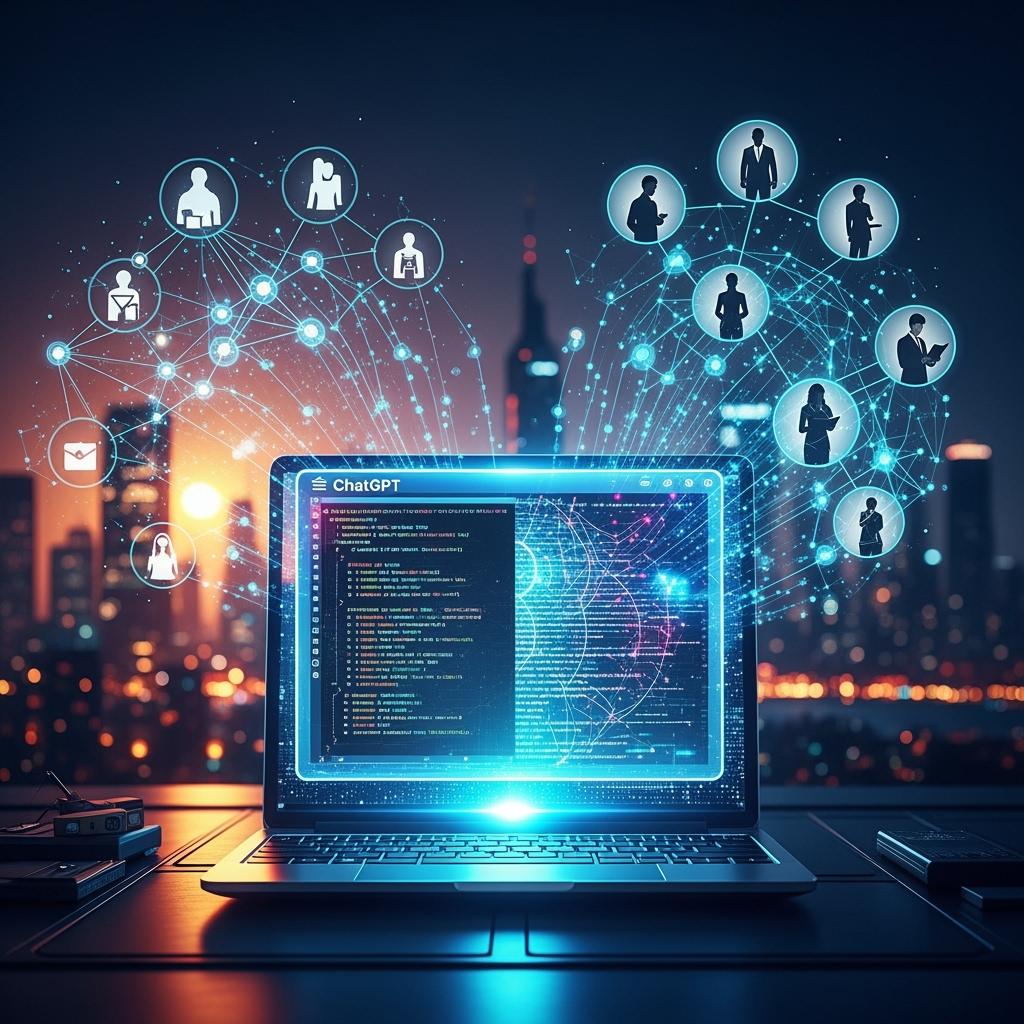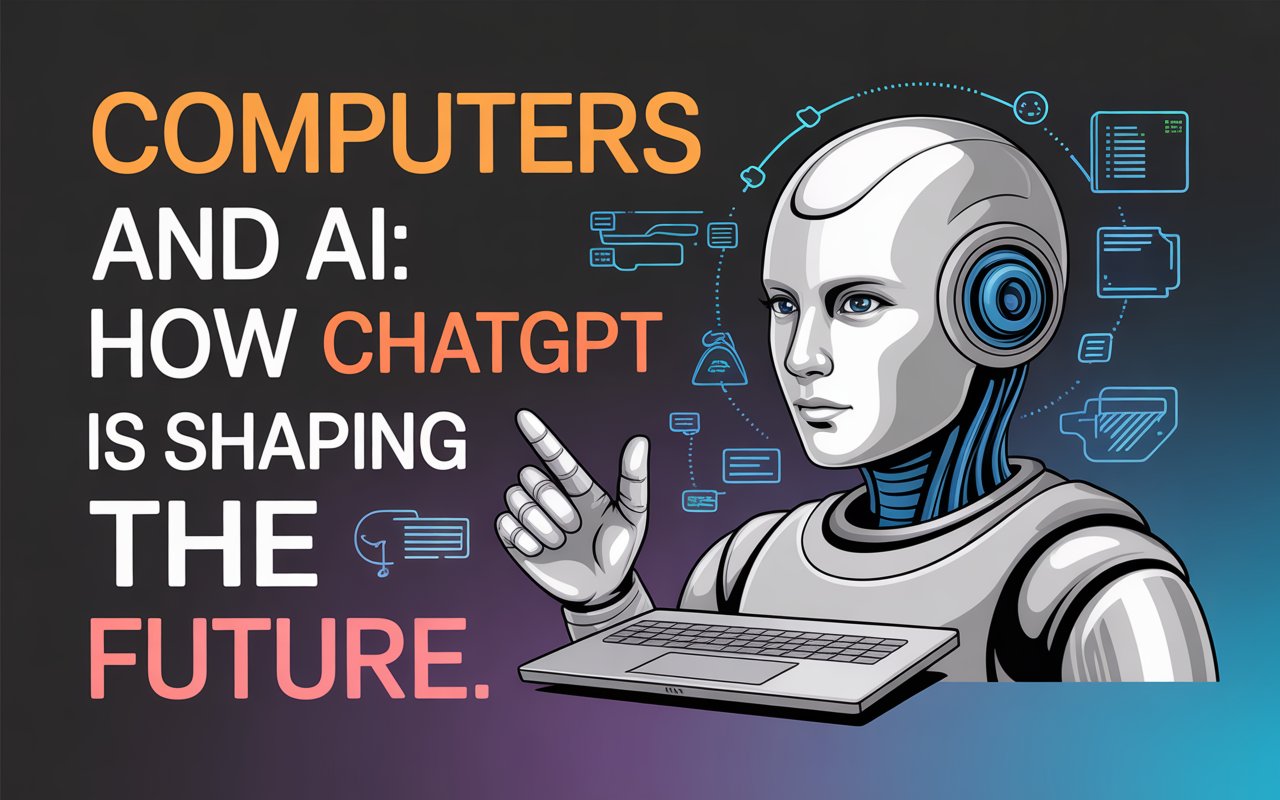Introduction
The relationship between computers and AI: how ChatGPT is shaping the future has quickly become one of the most talked-about shifts in technology. From streamlining businesses to transforming education and creativity, AI is no longer a distant concept—it’s here, driving real change. As we explore computers and AI: how ChatGPT is shaping the future, it’s clear that this powerful combination is redefining how humans interact with machines. Whether you’re a professional, student, or entrepreneur, understanding computers and AI and how ChatGPT is shaping the future gives you a front-row seat to the innovations shaping tomorrow’s digital world.
ChatGPT stands as a prime example of how conversational computers and AI can bridge the gap between human intent and machine understanding. Whether it’s powering virtual assistants, generating high-quality content, or supporting data-driven decisions, a future where technology functions more naturally than ever before is being shaped by the combination of computers and artificial intelligence.
The Evolution of AI and ChatGPT
From ELIZA to Advanced Language ModelsThe roots of conversational AI trace back to ELIZA, a 1960s program that mimicked a psychotherapist using scripted responses. Over the decades, advancements in natural language processing (NLP) and machine learning paved the way for powerful models like GPT (Generative Pre-trained Transformer). These models can understand context, generate human-like text, and engage in dynamic conversations.
OpenAI’s Journey to Creating ChatGPT
OpenAI began with a mission to develop safe and beneficial AI. Early iterations like GPT-1 and GPT-2 demonstrated text generation capabilities, but GPT-3 marked a leap in fluency and versatility. ChatGPT, built on these foundations, was fine-tuned for dialogue, safety, and usability, bringing AI into mainstream applications.
Key Technological Breakthroughs Behind ChatGPT
ChatGPT leverages transformer architecture, massive datasets, and advanced training techniques such as reinforcement learning from human feedback (RLHF). This combination enables it to produce coherent, context-aware responses across countless topics.
How ChatGPT is Transforming Industries Today
Revolutionizing Customer Service Interactions
Businesses are using ChatGPT-powered chatbots to handle customer inquiries 24/7, reducing wait times, increasing satisfaction, and lowering support costs.
Enhancing Content Creation and Marketing
Writers, marketers, and influencers leverage ChatGPT to draft articles, generate ideas, and optimize content for SEO—boosting productivity without sacrificing quality.
Streamlining Software Development
Developers use ChatGPT to write, debug, and document code, speeding up the software lifecycle and enabling quicker deployment of applications.
Supporting Healthcare Diagnosis and Patient Care
In healthcare, ChatGPT assists professionals by summarizing medical records, explaining treatment options, and helping patients understand complex information.
The Economic Impact of ChatGPT
Job Market Disruption and Creation
While automation may replace some roles, AI also creates new opportunities in AI ethics, data annotation, prompt engineering, and system integration.
Cost Savings for Businesses
By automating repetitive tasks, ChatGPT reduces operational costs and allows employees to focus on higher-value work.
New Business Models Emerging from AI
Innovative startups are developing AI-based services, from personalized learning platforms to automated legal assistance, redefining industries.
Ethical Considerations and Challenges
Managing Bias in AI Systems
AI models inherit biases from training data. Ongoing work focuses on identifying, minimizing, and transparently addressing these issues.
Privacy Concerns and Data Security
Safeguarding sensitive data is critical. Developers must ensure AI does not unintentionally reveal private information.
Ensuring Responsible AI Development
Responsible AI practices involve transparency, fairness, and accountability, ensuring AI benefits society at large.
The Challenge of AI Hallucinations
Sometimes AI generates plausible but incorrect information, known as “hallucinations.” Research aims to improve factual accuracy and reliability.
Balancing Innovation with Regulation
Governments and organizations must create policies that encourage innovation while protecting public interests.
The Future Landscape of AI and ChatGPT
GPT-5 and Beyond: What to Expect
Future versions of GPT will likely feature greater reasoning capabilities, real-time learning, and improved accuracy.
Integration with Other Technologies
ChatGPT will increasingly work alongside robotics, augmented reality, and IoT devices, enabling seamless human-AI collaboration.
AI’s Role in Solving Global Challenges
From climate modeling to education access, AI holds the potential to address some of the world’s most pressing problems.
Conclusion
ChatGPT is not just a milestone in AI—it’s a catalyst for change across industries, economies, and society. As technology advances, responsible development will ensure that AI remains a powerful ally in shaping a better future.
Recommendation
ChatGPT is revolutionizing communication by enabling natural, human-like interactions with computers. Its applications in education, customer support, and content creation are enhancing productivity and accessibility.
Embracing this technology will drive innovation and shape a smarter, more connected future.
Frequently Asked Questions
How is AI used in computers today?
AI helps computers perform tasks like language translation, image recognition, and decision-making faster and more accurately.
What makes ChatGPT important in AI development?
ChatGPT showcases advanced natural language processing, enabling computers to understand and respond in human-like ways.
Can AI and computers replace human jobs?
AI can automate certain tasks, but it also creates new roles that require human creativity, oversight, and problem-solving skills.



